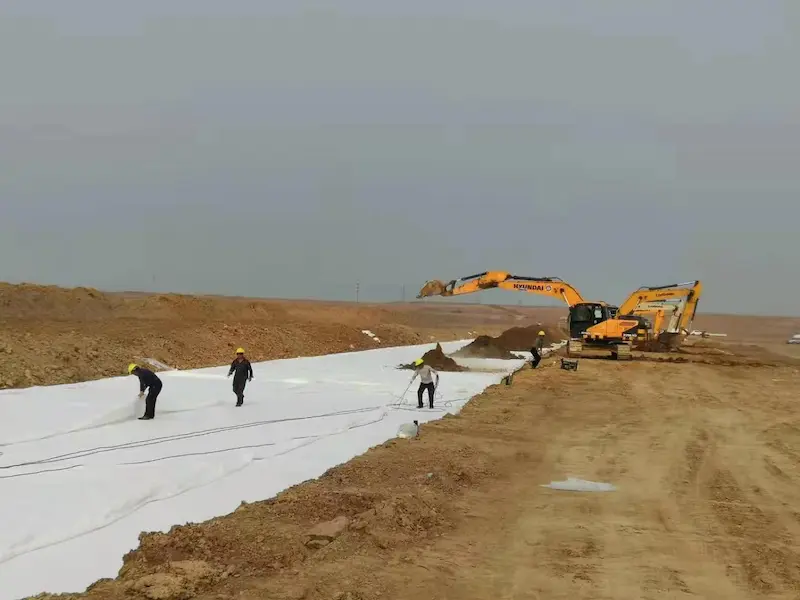As a geosynthetic geosynthetic reinforced embankment material, geotextile has many advantages, including:
1. Strength and stability: Geotextiles are usually composed of high-strength synthetic fibers, which provide superior tensile and tear strength and enhance the stability of the soil.
(1)Tensile strength: Geotextiles have good tensile strength and can withstand pulling forces from different directions. This allows it to be used in land infrastructure projects to enhance the tensile properties of soil and prevent soil cracks and landslides.
(2)Tear Resistance: Geotextiles generally have excellent tear resistance and are able to resist tearing and damage caused by external factors. This is crucial to the stability of the geotextile during construction and use, especially under complex geological conditions.
(3)Puncture resistance: Geotextiles have excellent puncture resistance and can effectively prevent puncture from sharp objects and extend the service life of the material. This is of great significance for the application of geotextiles in covering, anti-penetration and other aspects.
(4)Chemical stability: geosynthetic reinforced embankment generally have excellent chemical resistance and can remain stable in different environments. This allows it to function in harsh climates, acid and alkali environments, and other conditions, and is not easily affected by chemical factors.
(5)UV stability: Geotextiles generally have good UV resistance and can be exposed to sunlight outdoors for extended periods of time without losing strength. This is important for outdoor projects and applications exposed to the elements.
(6)Wear resistance: Geotextile has good wear resistance and can resist wear caused by external factors and maintain the integrity of the material. This is of great significance in situations that require frequent physical friction.
In summary, geotextiles have excellent performance in tensile strength, tear resistance, puncture resistance, chemical stability, UV stability and abrasion resistance. These advantages of geosynthetic reinforced embankment make it widely used in geotechnical engineering. Improved the stability and durability of the project.

Haoyang green plastic flat wire geotextile production
2. Anti-permeability: Geotextile can be used as an anti-permeability barrier to prevent moisture from passing through, thereby preventing soil erosion and protecting the basic structure.
(1) Microscopic pore structure: Geotextiles usually have a certain microscopic pore structure, which helps control water penetration. The size and distribution of pores can be designed and adjusted according to specific engineering needs to achieve different degrees of anti-penetration effects.
(2) Anti-permeability: The geotextile itself is usually not easy to penetrate water, which allows it to act as a waterproof layer in engineering to prevent groundwater or liquid from penetrating into the engineering structure. This is critical for the protection and stability of underground structures.
(3) Coating or membrane material: The surface of the geotextile can be coated or membrane material added to further improve its anti-penetration performance. These additional materials can increase the tightness of the geotextile and effectively resist moisture penetration.
(4) Combination with other anti-seepage materials: Geotextiles are often used in combination with other anti-seepage materials such as geomembranes, polymers, etc. to form a more powerful anti-seepage layer. This combination can give full play to the advantages of different materials and improve the overall anti-seepage effect.
(5) Control of anti-penetration performance: The material and manufacturing process of geotextiles can be flexibly adjusted to meet the anti-penetration performance requirements of specific projects. Therefore, in different engineering scenarios, appropriate geotextile types can be selected to achieve the best anti-seepage effect.
Generally speaking, geosynthetic reinforced embankment has the huge advantages of strong controllability, good combination effect, and multiple surface treatment options in terms of anti-penetration, which makes it one of the important materials in waterproofing and anti-penetration projects.
3. Filtration performance: Geotextile has excellent filtration performance, allowing water to pass while preventing the erosion of soil particles and maintaining the stability of the soil.
(1) Microscopic pore structure: Geotextiles usually have a uniform microscopic pore structure, which helps to effectively filter particles and impurities in the soil. The size and distribution of pores can be designed and adjusted according to specific engineering needs to achieve different levels of filtration effects.
(2) Catching and intercepting particles: The fiber structure of the geotextile can grasp and intercept particles in the soil and prevent them from passing through the geotextile, thereby achieving effective filtration of particles. This helps to maintain soil stability and reduce particle erosion of engineered structures.
(3) Maintain soil structure: Geotextile can prevent the mixing and destruction of soil particles during the filtration process, helping to maintain the natural structure of the soil. This has a positive impact on soil stability and water permeability.
(4) Anti-biodegradation: High-quality geotextiles usually have anti-biodegradation properties and can resist microorganisms and biological activity in the soil, thereby maintaining the stability and durability of their filtration performance.
(5) Selective filtration: The pore size of the geotextile can be selected according to needs to achieve selective filtration of different particle sizes. This allows the filtering effect to be accurately controlled in different engineering scenarios to meet the requirements of engineering design.
Generally speaking, geotextiles have the characteristics of uniform pore structure, particle retention and interception, maintenance of soil structure, and resistance to biodegradation in terms of filtration performance, making them an ideal choice for water and soil conservation, drainage systems, soil stabilization and other projects. Ideal filter material.
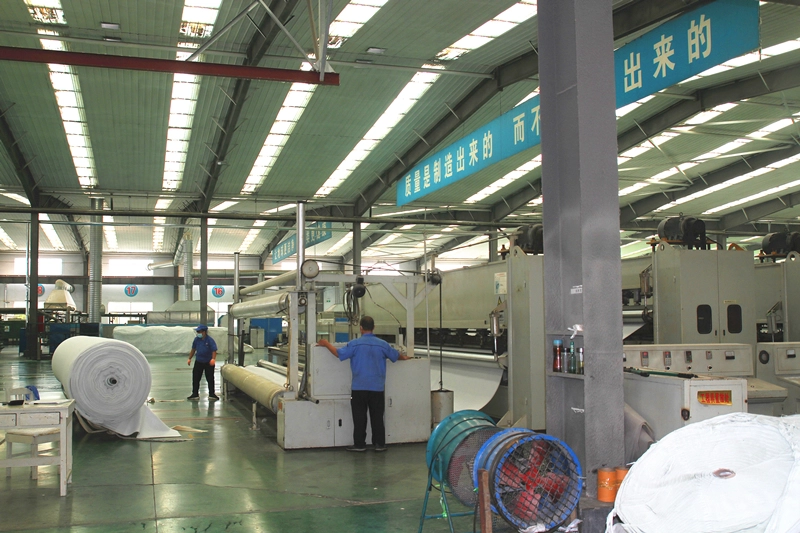
Haoyang geosynthetic materials short filament geotextile production workshop
4. Anti-biodegradation: High-quality geotextiles usually have anti-biodegradation properties and can maintain long-term stability under different environmental conditions.
(1) Chemical stability: High-quality geotextiles are usually made of polymer materials and have high chemical stability. This makes the geotextile resistant to erosion by microorganisms, fungi and bacteria in the soil and is not prone to biodegradation.
(2) Corrosion resistance: The material of geotextile is corrosion-resistant and can resist corrosive substances such as acids, alkalis, and salts that may be present in the soil, thereby delaying the process of biodegradation.
(3) Adding preservatives: During the production process of geotextile, preservatives and other chemical substances can be added to improve its anti-biodegradation performance. Such treatment can effectively extend the service life of geotextiles.
(4) Experimentally verified: Geotextiles usually undergo rigorous experimental verification to ensure that they can maintain stability under specific environmental conditions. This includes exposure to soil, water and other natural environments to verify that they are not susceptible to microbial erosion.
(5) Application experience: In actual engineering applications, the anti-biodegradation performance of high-quality geotextiles has been verified and affirmed. Long-term engineering practice shows that geotextiles have good anti-biodegradation effect in soil.
To sum up, the anti-biodegradation advantages of geosynthetic reinforced embankment are reflected in its chemical stability, corrosion resistance, added preservatives, experimental verification and rich application experience. These characteristics enable geotextiles to perform their functions stably under a variety of environmental conditions, extend their service life, and provide reliable support for projects.
5. Light and easy to carry: Geotextiles are usually light and easy to carry, easy to use at project sites, and reduce transportation and installation costs.
(1) Lightweight materials: High-quality geotextiles are usually made of lightweight synthetic fibers, such as polypropylene or polyester. This makes the geotextile itself lightweight and easy to carry and transport.
(2) Roll form: Geotextiles are usually provided in roll form, which is easy to roll up and unroll. This design makes it easier to carry and transport, and also facilitates quick installation on site.
(3) Flexibility: geosynthetic reinforced embankment has good flexibility and can adapt to different terrains and environments. This allows the geotextile to be bent and folded as needed during transportation without affecting its performance and service life.
(4) Easy to cut: Geotextiles have a certain degree of tailorability and can be cut according to specific project needs to adapt to construction sites of different sizes and shapes. This facilitates customized applications and reduces portability and transportation inconveniences.
(5) Fatigue resistance: High-quality geosynthetic reinforced embankment usually have high fatigue resistance. Even if they are rolled up and unfolded multiple times, they are not prone to fatigue damage and maintain their stability and reliability.
(6) Easy to store: Geotextiles take up relatively little space when stored in rolls, making them easy to store in warehouses or transportation vehicles. This helps reduce storage costs and improve storage efficiency.
To sum up, the huge advantages of geosynthetic reinforced embankment being light and easy to carry are mainly reflected in its lightweight material, roll form, flexibility, easy cutting, fatigue resistance and easy storage, etc., making it easy to carry and transport at various engineering sites. And the application process is more convenient and efficient.
![]() 200g Staple fiber non-woven geotextile.pdf
200g Staple fiber non-woven geotextile.pdf
![]() 300g PET geotextiles test report.pdf
300g PET geotextiles test report.pdf
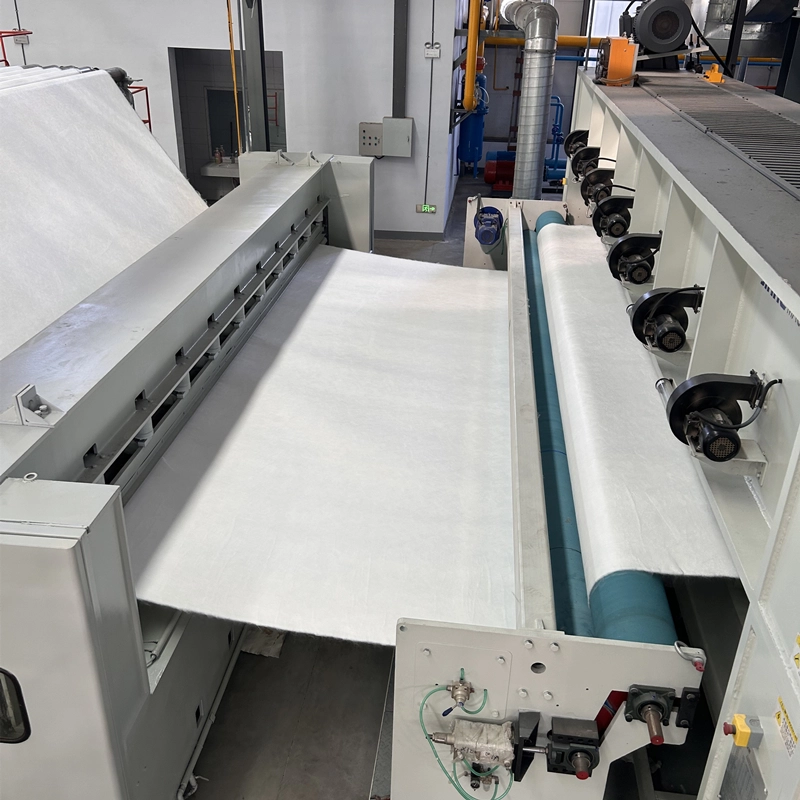
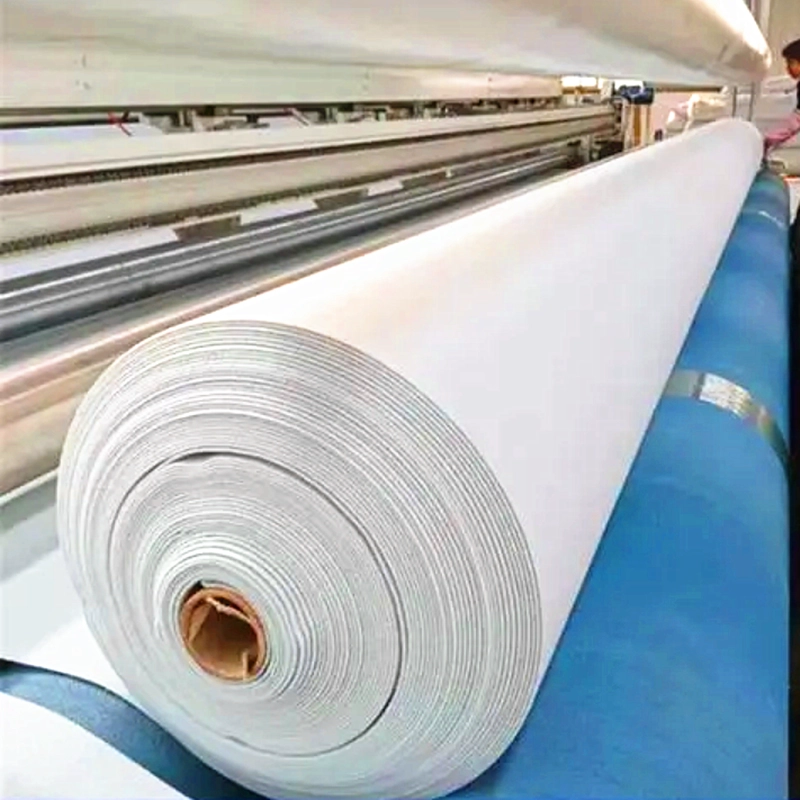
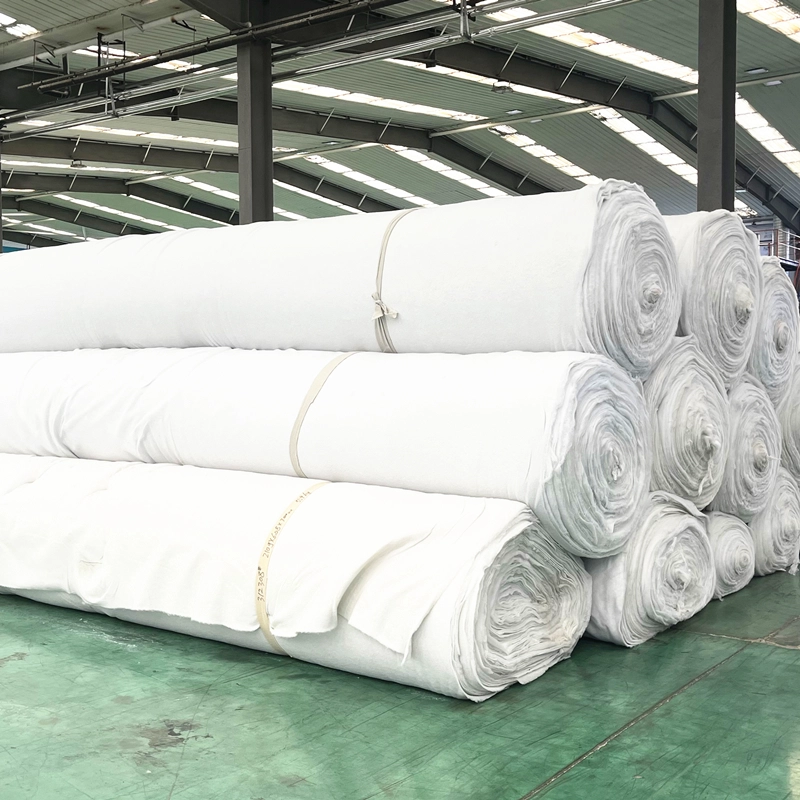
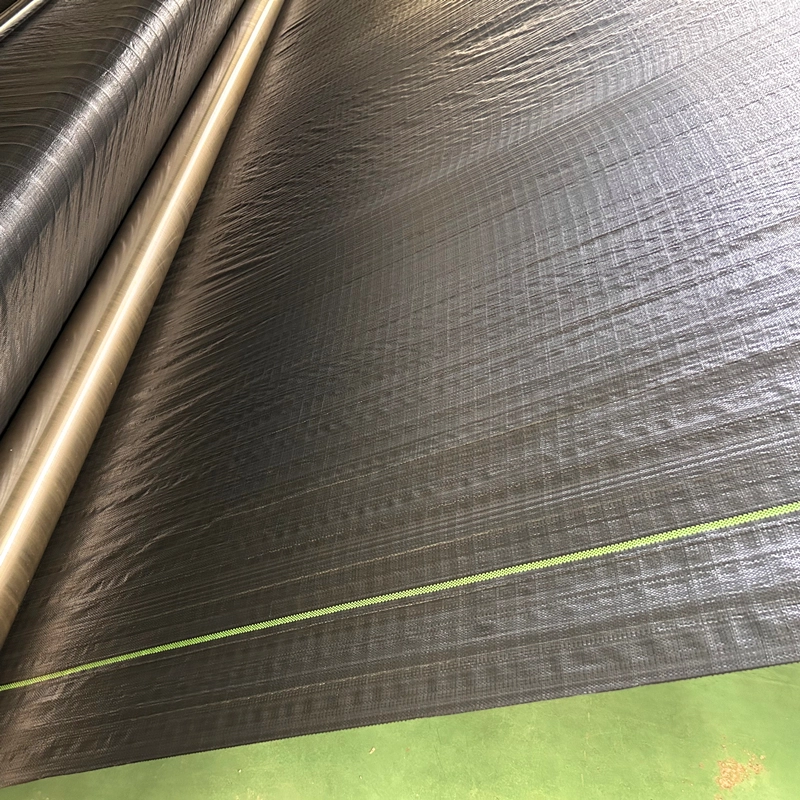
503.webp)
759.webp)

628.webp)
